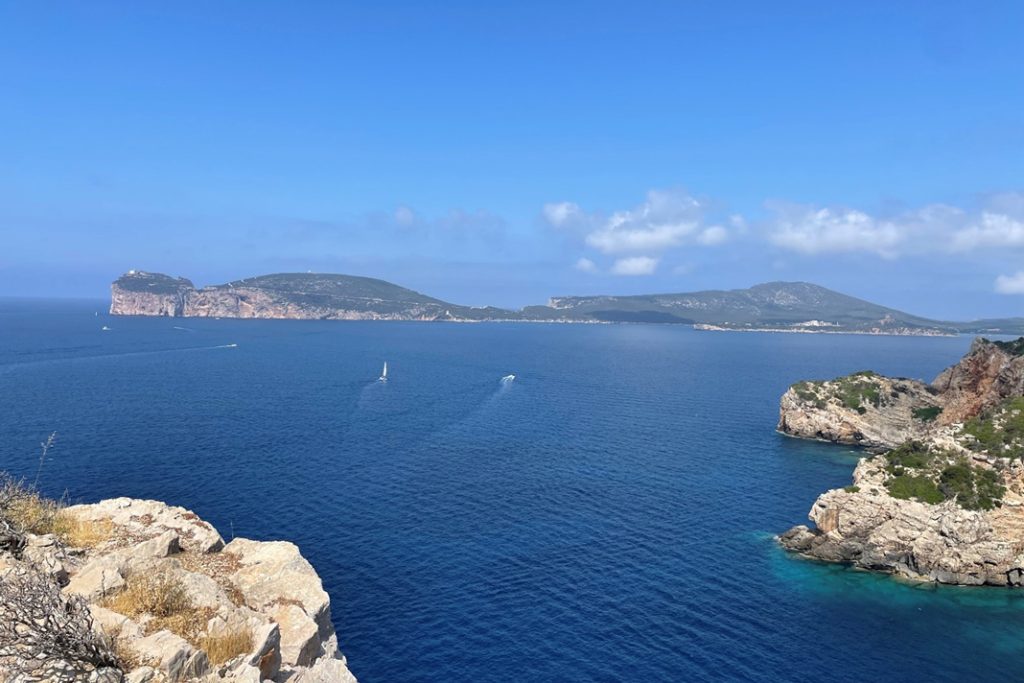
Defining a shared 2030 Roadmap for fire-resilient landscapes in Sardinia (Italy) – one of the most fire-prone areas of Southern Europe and a hub for EU-funded research and innovation projects on wildfires – is no small task. This challenge brought together professionals, researchers, NGOs, innovators and regional government agencies in Porto Conte (Sardinia), within the FIRE-RES and ResAlliance projects, to discuss priorities for adopting innovative approaches to integrated fire management over the next five years.
A roadmap for wildfire resilience
With the objective of defining a five-year plan (Roadmap 2030) for improved management of large forest fires in all stages – preparedness and prevention, detection and response, and post-fire recovery and adaptation – the regional agency Forestas convened a major meeting in Porto Conte (Alghero, SS) on 4–5 July.
The event brought together actors involved in several innovation and technology transfer projects carried out in Sardinia in recent years. As part of the third meeting of the Community of Wildfire Innovation of the Sardinia Living Lab (FIRE-RES project), coordinators of seven European projects recently concluded or still ongoing in the fields of forestry and fire management shared their insights. The projects included: ResAlliance (Horizon Europe), MedStar 2 (Interreg), DRYAD (Horizon), SUREPASTOR (PRIMA), TEMA (Horizon), FIRE ADAPT (HORIZON-MSCA), and Fires and Climate Change (DG RAS).
Through a workshop and an open roundtable discussion, these project leaders – alongside public administration representatives, professionals, local authorities and researchers – outlined action priorities based on their expertise. Their recommendations will be proposed to regional policymakers to strengthen Sardinia’s resilience to climate change impacts through the Living Lab approach.
Shared knowledge and best practices
The meeting was also a joint event with ResAlliance, featuring “best practice showrooms” and a field visit, organised in collaboration with DREAM Italia. Participants visited demonstration sites under the FIRE-RES project in the pilot areas of Porto Conte (Alghero) and Grighine (Villaurbana). Here, preventive silviculture through innovative mechanical thinning was combined with goat grazing as a fire prevention strategy – a model that also supports local value chains through forage and the use of thinning residues.
ResAlliance members showcased “good practices” through posters and videos, based on factsheets and key research articles. These will be added to the EU-FarmBook database, helping share knowledge and solutions on fire prevention across Europe.

A vision for 2030
Participants developed a shared vision for wildfire-resilient landscapes in 2030, identifying current shortcomings, gaps to be addressed, and milestones to be achieved. Building on previous meetings, surveys and innovative actions tested in FIRE-RES, the following priorities were identified:
- Create fire-prepared, fire-wise communities, and raise risk awareness for self-protection, while taking into account the severe depopulation that prevents reliable local resources and available young personnel;
- Increase education, training, and awareness through targeted investments and locally driven processes, ensuring the use and development of existing initiatives such as the INFEAS network.
- Ensure staff training, international exchange of experience and knowledge, both operationally and in research;
- Improve and strengthen the information system with big data analysis and information integration with new technologies (e.g., drones) to create digital twins useful in the operations room.
- From a territorial perspective, a general review of planning documents is needed, for example, to implement: a more efficient rural road network, and water management including nature-based solutions.
- Perform a review and updating of the regulatory framework, which includes planning integration at the regional, district, and local levels, and interaction between environmental planning and spending tools such as the Rural Development Programme, among others;
- Construct a dynamic map with periodic updates, e.g., using LIDAR, and the availability of economic data for continuous monitoring of the territory. Furthermore, provide simulation tools to improve understanding of fire phenomena;
- Build participatory planning using “citizen science”;
- Systematically plan innovative actions throughout the territory wherever possible, upscaling prescribed burning and prescribed grazing from the experimental level to yearly preparedness plans at the local level on a stable basis;
- Analyse the reasons for non-use of RD funds for fire prevention and recovery and address related causes.

Key conclusions
The Porto Conte workshop and roundtable represented an important step towards a shared Roadmap 2030 for Sardinia, drawing on the outcomes of several European projects and the expertise of diverse stakeholders across the integrated fire management cycle.
The discussions also highlighted several critical issues:
- Strengthening multi-level territorial governance – Developing integrated models that bring together public bodies, local communities, farmers, foresters and researchers for more effective preventive risk management.
- Promoting traditional agricultural and pastoral practices in active prevention – Controlled grazing, successfully tested in FIRE-RES, offers a sustainable and replicable way to reduce fuel loads. For wide adoption, it requires economic support and communication campaigns, as well as integration into rural development policies.
- Integrating technological solutions and predictive models – Applying spatial risk models to anticipate crisis scenarios and guide targeted interventions across the region.
More details on the Roadmap 2030 will be shared in the final deliverables of the FIRE-RES project.
This article was originally written by:
Sara Maltoni and Alessandro Porrà – Regional Agency for Forests and the Environment of Sardinia (FoReSTAS)
The post Towards a 2030 roadmap for wildfire-resilient landscapes in Sardinia appeared first on Resilience Blog.